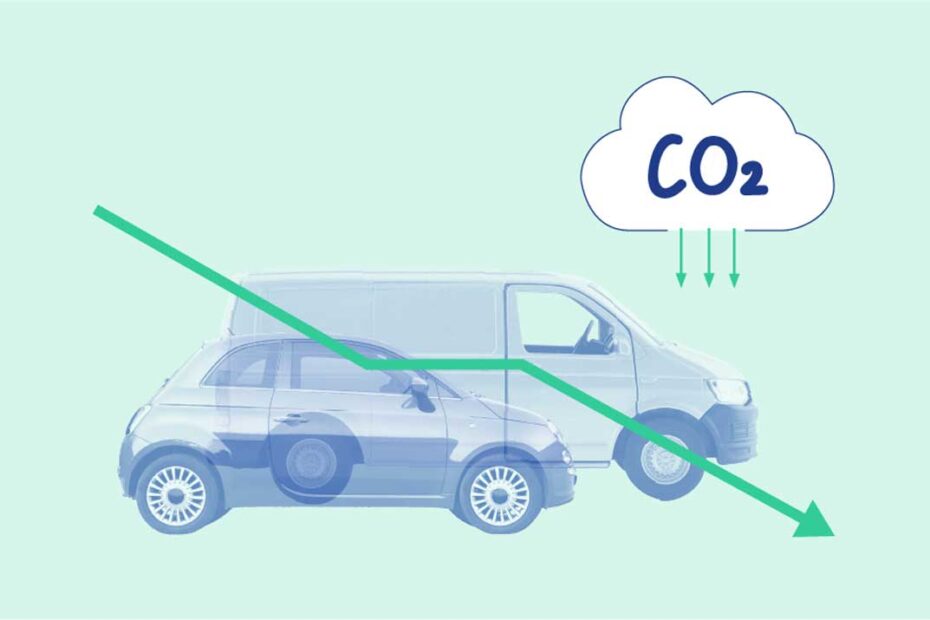First ‘Fit for 55’ proposal agreed: the EU strengthens targets for CO2 emissions for new cars and vans
The Council and the European Parliament reached a provisional political agreement on stricter CO2 emission performance standards for new cars and vans. The purpose is to move towards a zero-emission mobility.
Pending a formal adoption, the co-legislators agreed to a:
55% CO2 emission reduction target for new cars and 50% for new vans by 2030 compared to 2021 levels
100% CO2 emission reduction target for both new cars and vans by 2035.
This agreement will pave the way for the modern and competitive automotive industry in the EU. The world is changing, and we must remain at the forefront of innovation. I believe we can take advantage of this technological transition. The envisaged timeline also makes the goals achievable for car manufacturers.
Jozef Síkela, Czech minister of industry and trade
Closing a first deal on a proposal from the ‘Fit for 55’ package is a strong signal that the EU is determined to make progress towards climate neutrality and the green transition. Zero-emission mobility will be a building block for slowing down climate change that can create severe disruptions in many sectors of our society, including environment, migration, food security and the economy.
Anna Hubáčková, Czech minister of environment
The regulatory incentive mechanism will be kept for zero- and low-emission vehicles (ZLEV) until 2030. As part this mechanism, if a manufacturer meets certain benchmarks for the sales of zero- and low-emission vehicles it can be rewarded with less strict CO2 targets. The co-legislators agreed to increase the benchmark to 25% for cars and 17% for vans until 2030.
The agreement includes wording on CO2 neutral fuels whereby following consultation with stakeholders, the Commission will make a proposal for registering vehicles running exclusively on CO2-neutral fuels after 2035 in conformity with EU law, outside the scope of the fleet standards, and in conformity with the EU’s climate neutrality objective.
The agreement includes a review clause that will ensure that in 2026, the Commission thoroughly assess the progress made towards achieving the 100% emission reduction targets and the need to review these targets taking into account technological developments, including with regard to plug-in hybrid technologies and the importance of a viable and socially equitable transition towards zero emissions.
In addition, the agreement includes a reinforcement of other provisions in the regulations such as:
- reducing the cap of emission credits that manufacturers can receive for eco-innovations that verifiably reduce CO2 emissions on the road, to up to 4g/km per year from 2030 until 2034 (currently set at 7g/km per year).
- The Commission will develop a common EU methodology, by 2025, for assessing the full life cycle of CO2 emissions of cars and vans placed on the EU market, as well as for the fuels and energy consumed by these vehicles. Based on this methodology, manufacturers may, on a voluntary basis, report to the Commission on the life cycle emissions of the new vehicles they place on the market.
The agreement maintains a derogation for small volume manufacturers until the end of 2035.
The text of the provisional political agreement will be made available soon.
Background and next steps
The proposal revises existing rules, last amended in 2019. The provisional political agreement reached in trilogue negotiations will now have to be formally adopted by the Council and the Parliament.
According to the regulation, every manufacturer must ensure that the average CO2 emissions from its fleet of newly registered vehicles in a calendar year do not exceed its specific annual emissions target. Manufacturers can continue to place vehicles with combustion engines on the market but if they exceed their emissions target in a given year, they must pay a premium of €95 per gram CO2/km above the target per vehicle registered. Consequently, with the new targets agreed, zero-emission vehicles will eventually become cheaper than vehicles running on fossil fuels.
The related revision of the deployment of an alternative fuels infrastructure (AFIR) which is currently discussed between the Council and the Parliament will enable to develop an infrastructure for drivers to recharge their vehicles across the member states.
The proposal to revise the CO2 emissions performance standards for cars and vans is part of the ‘Fit for 55’ package. Presented by the European Commission on 14 July 2021, the package aims to enable the EU to reduce its net greenhouse gas emissions by at least 55% by 2030 compared to 1990 levels and to achieve climate neutrality in 2050.
The Parliament adopted a series of amendments to the Commission proposal at its plenary session on 8 June 2022. On 29 June 2022, the Environment Council reached a general approach on the proposal.
General approach on CO2 emission performance standards for cars and vans
Commission proposal on the revision of Regulation (EU) 2019/631 setting CO2 emission performance standards for new passenger cars and for new light commercial vehicles
Regulation (EU) 2019/631 setting CO2 emission performance standards for new passenger cars and for new light commercial vehicles
Fit for 55 (background information)
